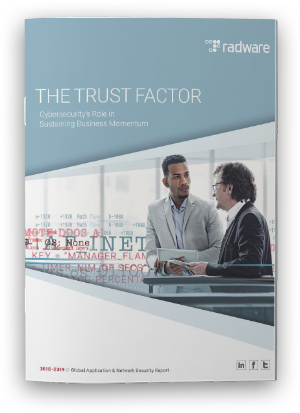10 Most Popular Blogs of 2019
2019 was a banner year for cybersecurity; ransomware crippled city and state governments, bots dominated online retailers, and state-sponsored cyber threats gained international attention. Indeed, we had a lot to write about this past year. Below, we recap our ten most popular blogs of 2019.

Excessive Permissions are Your #1 Cloud Threat
Migrating workloads to public cloud environment opens up organizations to a slate of new, cloud-native attack vectors which did not exist in the world of premise-based data centers. In this new environment, workload security is defined by which users have access to your cloud environment, and what permissions they have. As a result, protecting against excessive permissions, and quickly responding when those permissions are abused, becomes the #1 priority for security administrators. Read more…
Bot or Not? Distinguishing Between the Good, the Bad & the Ugly
For every ‘good’ bot, there is a nefarious one designed to disrupt, steal or manipulate. Indeed, at least one third of all Internet traffic is populated by a spectrum of ‘bad’ bots. On one end, there are the manipulative bots, like those designed to buy out retailers’ inventory to resell high-demand goods at markup (like limited edition sneakers or ticket scalping) or simulate advertiser click counts. On the other, more extreme end, malicious bots take over accounts, conduct API abuse and enslave our IoT devices to launch massive DDoS attacks. Read more…
Does Size Matter? Capacity Considerations When Selecting a DDoS Mitigation Service
When security professionals design a DDoS mitigation solution, one of the key considerations is the capacity of the DDoS mitigation service. That said, it isn’t easy to figure out which DDoS mitigation service actually has the capacity to withstand the largest DDoS attacks. This is because there are a range of DDoS mitigation solutions to pick from, and capacity is a parameter most vendors can spin to make their solution appear to be flush with capacity. Read more…
Application Security in the Microservices Era
As organizations break their applications down into microservices, leveraging containers as the perfect architecture for it, the responsibility for securing these environments is shifting as well, exposing companies to a broader range of security risks and gaps in protection. Read more…
Is It Legal to Evaluate a DDoS Mitigation Service?
Most of us in this industry do have DDoS testing tools, so what’s the big deal? As vendors who provide cybersecurity solutions, we shouldn’t have any problems launching attacks over the Internet to test out a DDoS mitigation service…right? WRONG! Here’s why that’s a bad idea. Read more…
The Evolution of Application Development
The evolution of application development has gone through many stages, and each has had its challenges.
It started with monolithic code, which was difficult to regression-test, and was essentially snowflake construction that required longer development cycles. We then moved to dedicated/embedded modules written within applications that made testing easier and created the beginnings of reusability. We subsequently advanced best practices to module portability/reusability, which opened the door for both proprietary and open-source module code reuse. Read more…
Mitigating Cloud Attacks With Configuration Hardening
For attackers, misconfigurations in the public cloud can be exploited for a number of reasons. Typical attack scenarios include several kill chain steps, such as reconnaissance, lateral movement, privilege escalation, data acquisition, persistence and data exfiltration. These steps might be fully or partially utilized by an attacker over dozens of days until the ultimate objective is achieved and the attacker reaches the valuable data. Read more…
Agile Security Is Now A Reality
Service mesh is the popular architecture where monolithic applications are broken down into microservices, becoming the common delivery model providing for better agility, elasticity and scale. Companies that deploy service mesh architecture require advanced automation and orchestration tools to help them achieve these business goals (agility, elasticity, and scale) and assemble an ecosystem that supports continuous deployment. Read more…
Ensuring Data Privacy in Public Clouds
Most enterprises spread data and applications across multiple cloud providers, typically referred to as a multicloud approach. While it is in the best interest of public cloud providers to offer network security as part of their service offerings, every public cloud provider utilizes different hardware and software security policies, methods and mechanisms, creating a challenge for the enterprise to maintain the exact same policy and configuration across all infrastructures. Read more…
Navigating the Bot Ecosystem
Businesses, application owners, users, designers, security practitioners, or network engineers can distinguish the difference between good bots and bad bots in their operating environments. As the speed of business continues to accelerate and automate, the instantaneous ability to distinguish legitimate, automated communications from illegitimate will be among the most crucial security controls we can on board. Read more…




